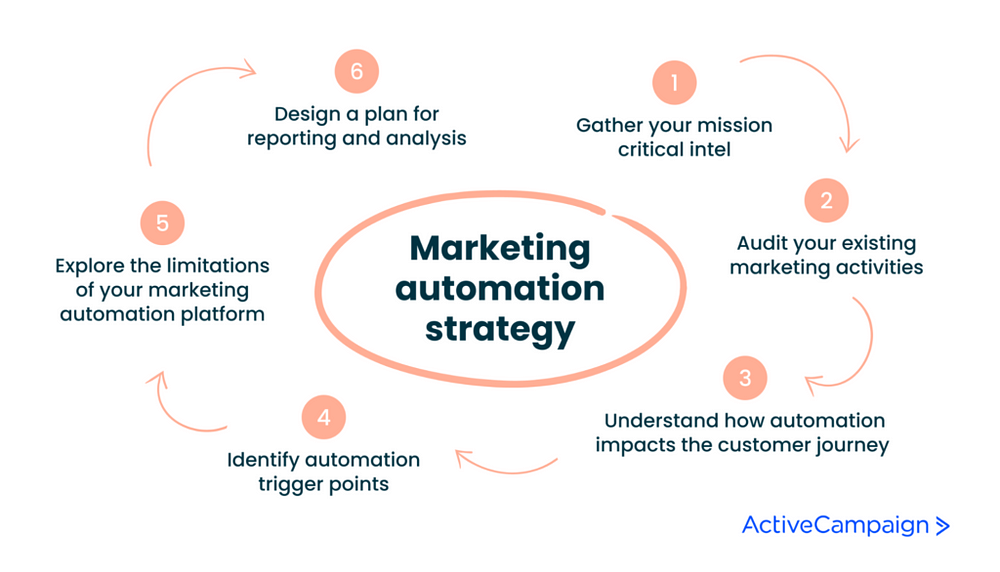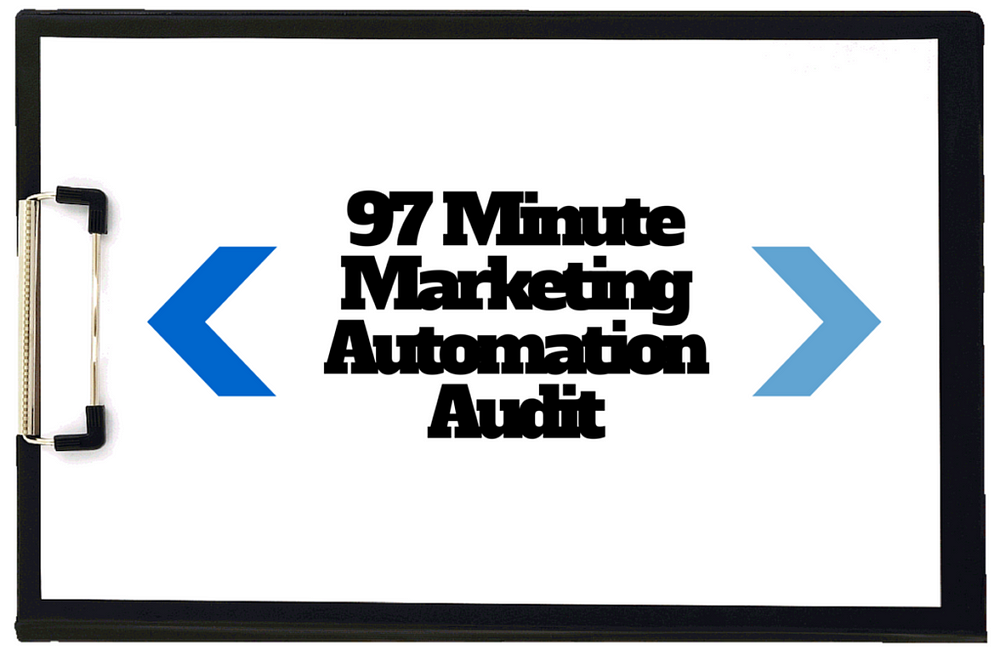A Marketing Automation Audit evaluates the effectiveness and efficiency of your marketing automation tools. It identifies areas for improvement and optimizes performance.
Marketing automation is crucial for streamlining repetitive tasks and enhancing customer engagement. A thorough audit reviews your current tools, workflows, and metrics to ensure they align with your business goals. It helps identify gaps, redundancies, and opportunities for improvement. This process maximizes the return on investment from your marketing automation efforts.
Regular audits ensure your strategies remain effective in a constantly evolving market. By optimizing your tools and processes, you enhance customer experiences and drive better results. A well-executed audit ultimately leads to improved efficiency, increased revenue, and stronger customer relationships.

Credit: www.activecampaign.com
Introduction To Marketing Automation Audit
Introduction to Marketing Automation Audit
A Marketing Automation Audit is a review of your marketing automation tools and strategies. It helps in identifying gaps and optimizing performance. This process is crucial for enhancing your marketing efforts and achieving better results.
Importance Of Auditing
Auditing your marketing automation can reveal hidden issues. These issues might be affecting your campaigns. Regular audits ensure your tools are working efficiently. They help in maximizing your return on investment.
Here’s why auditing is important:
- Identify Inefficiencies: Find and fix areas that waste resources.
- Enhance Performance: Boost the effectiveness of your campaigns.
- Data Accuracy: Ensure your data is clean and accurate.
- Compliance: Stay compliant with regulations.
Key Objectives
The main goals of a marketing automation audit are clear. They focus on improving your marketing strategies.
- Assess Current Tools: Evaluate the tools you are using. Determine if they meet your needs.
- Analyze Campaign Performance: Review past campaigns. Identify what worked and what didn’t.
- Optimize Workflows: Ensure your workflows are efficient. Make adjustments where needed.
- Improve Data Quality: Check the quality of your data. Remove duplicates and outdated information.
Identifying Gaps In Current Automation
Marketing automation can streamline many processes. But it’s crucial to ensure it works efficiently. Identifying gaps in your current automation setup is essential. This helps in refining strategies and boosting performance.
Common Pitfalls
Many marketers face challenges in automation. Some common pitfalls include:
- Outdated software — using old versions can slow down processes.
- Lack of integration — systems not working together seamlessly.
- Over-automation — automating too many tasks can lead to errors.
- Poor data management — inaccurate data affects decision-making.
Signs Of Inefficiency
Recognizing inefficiencies in your automation setup is vital. Here are some signs:
Sign Description Low engagement rates Your audience isn’t interacting with your content. High bounce rates Users leave your site quickly. Delayed responses Automated emails or messages take too long to send. Inconsistent data Your data doesn’t match across platforms.
Evaluating Automation Tools
Marketing automation tools can transform your business. They save time and boost efficiency. But, how do you pick the right one? Evaluating automation tools is vital. Let’s dive into key areas to assess.
Tool Performance
Performance is crucial. Your tool should handle large data volumes. It must not slow down during peak times. Check user reviews for performance insights. Speed and reliability are key metrics.
Integration Capabilities
Integration capabilities are essential. Your automation tool should connect with existing systems. This includes your CRM, email platform, and social media channels. Seamless integration prevents data silos.
- CRM Integration: Syncs customer data effortlessly.
- Email Platforms: Automate email campaigns smoothly.
- Social Media: Schedule and track posts in one place.
Use APIs to enhance integration. Ensure the tool supports popular platforms. Check for pre-built connectors.

Credit: marcloudconsulting.com
Analyzing Campaign Performance
Analyzing campaign performance is crucial for optimizing your marketing efforts. It helps identify which strategies are working and which need improvement. This analysis involves monitoring key metrics and understanding success indicators.
Metrics To Monitor
Metrics provide insights into your campaign’s effectiveness. Here are some important metrics to monitor:
- Click-Through Rate (CTR): Measures the ratio of clicks to impressions.
- Conversion Rate: Indicates the percentage of visitors completing a desired action.
- Bounce Rate: Shows the percentage of visitors who leave without interacting.
- Customer Acquisition Cost (CAC): Calculates the cost to acquire a new customer.
- Return on Investment (ROI): Measures the profitability of your campaigns.
Success Indicators
Understanding success indicators is essential for evaluating campaign performance. Consider these key success indicators:
- Lead Generation: The number of leads generated from the campaign.
- Sales Growth: The increase in sales attributed to the campaign.
- Customer Retention: The rate at which customers stay loyal.
- Brand Awareness: The extent to which your brand is recognized.
- Engagement Levels: The amount of interaction with your content.
Monitoring these metrics and success indicators ensures your campaigns are on track. It helps make data-driven decisions for future improvements.
Enhancing Customer Segmentation
Enhancing Customer Segmentation is crucial for any successful marketing automation audit. It involves refining how you group your customers. This allows for more personalized and targeted marketing efforts.
Segmentation Strategies
Effective segmentation strategies can vastly improve your marketing impact. Here are some methods:
- Demographic Segmentation: Group customers by age, gender, income, etc.
- Geographic Segmentation: Divide the audience based on location.
- Behavioral Segmentation: Segment by customer behaviors and actions.
- Psychographic Segmentation: Classify based on lifestyle, values, and attitudes.
Personalization Techniques
Once segmented, use personalization techniques to tailor your messages:
- Dynamic Content: Change content based on user data.
- Email Personalization: Use names and past purchases in emails.
- Personalized Offers: Provide exclusive deals based on customer interests.
- Customized Landing Pages: Create landing pages for specific segments.
Segmentation Type Benefit Demographic Targets specific age or gender groups Geographic Focuses on location-based marketing Behavioral Caters to customer actions and behaviors Psychographic Appeals to values and lifestyles

Credit: www.net-results.com
Improving Lead Nurturing Processes
Marketing automation audits help refine lead nurturing. This process ensures that leads are engaged effectively. Companies can convert more leads into loyal customers. Let’s explore two critical components: Lead Scoring and Nurture Campaigns.
Lead Scoring
Lead scoring ranks leads based on their engagement. This helps prioritize the most promising leads. Use a points-based system for accuracy.
Action Points Website Visit 5 Email Open 10 Form Submission 20
Automated tools can track these actions. This ensures efficient lead scoring. Regularly review and adjust the scoring system.
Nurture Campaigns
Nurture campaigns keep leads engaged over time. Send targeted content based on their interests. Use different types of content:
- Emails
- Blog Posts
- Webinars
- Social Media Posts
Segment your audience for personalized content. Test different approaches to find what works best. Measure success with metrics like open rates and click-through rates.
Effective nurture campaigns build strong relationships. They guide leads through the sales funnel.
Optimizing Email Marketing
Optimizing email marketing is key to improving engagement and conversions. It involves fine-tuning your strategies to ensure emails reach the right audience. This section will guide you through the essentials of email marketing optimization.
Email Campaign Best Practices
Follow these best practices to enhance your email campaigns:
- Personalize your emails using the recipient’s name.
- Use a clear and compelling subject line.
- Keep your content short and engaging.
- Include a strong call-to-action (CTA).
- Ensure your emails are mobile-friendly.
A/b Testing
A/B testing helps you determine what works best in your email campaigns. Here’s how you can execute A/B testing effectively:
- Create two versions of an email: Version A and Version B.
- Change one element, such as the subject line or CTA.
- Send both versions to small segments of your audience.
- Analyze the results to see which version performs better.
- Implement the winning version for the rest of your audience.
Element to Test Impact Subject Line Open Rates CTA Click-Through Rates Content Length Engagement
By following these practices, your email marketing can become more effective. Use the data to continuously refine your approach.
Leveraging Data For Insights
Leveraging Data for Insights in marketing automation is crucial. It helps businesses stay competitive and make informed decisions. Understanding how to analyze and utilize data can drive your marketing efforts to new heights. This section will dive deep into effective data analysis methods and how to extract actionable insights.
Data Analysis Methods
Effective data analysis is key to understanding your marketing performance. Various methods can help you draw meaningful conclusions from your data.
- Descriptive Analytics: Summarizes past data to understand trends.
- Predictive Analytics: Uses historical data to predict future outcomes.
- Prescriptive Analytics: Recommends actions based on data insights.
Each method serves a unique purpose and together, they provide a comprehensive view. Utilizing these methods allows you to make better marketing decisions.
Actionable Insights
Extracting actionable insights from your data is essential. It transforms raw data into strategic actions. Here’s how to do it:
- Identify Key Metrics: Focus on metrics that align with your goals.
- Data Visualization: Use charts and graphs to make data easier to understand.
- Trend Analysis: Spot patterns and trends to predict future behaviors.
- Segmentation: Break down data by demographics, behavior, etc.
Using these steps, you can turn data into valuable insights. These insights can then be used to refine your marketing strategies.
Method Description Example Descriptive Analytics Summarizes past data Monthly sales reports Predictive Analytics Predicts future outcomes Sales forecasts Prescriptive Analytics Recommends actions Marketing strategy suggestions
Leveraging data for insights is a powerful tool in marketing automation. By understanding data analysis methods and extracting actionable insights, your marketing strategy can reach new levels of success.
Implementing Changes For Better Roi
After conducting a marketing automation audit, it’s essential to implement changes. These changes can significantly improve your ROI. This section focuses on strategic adjustments and continuous improvement.
Strategic Adjustments
Strategic adjustments involve tweaking your marketing strategies. These tweaks aim to enhance performance. Below are key areas to consider:
Area Action Target Audience Refine audience segments for better targeting. Content Strategy Update content based on data insights. Email Campaigns Personalize emails for higher engagement. Ad Spend Allocate budget to high-performing channels.
Continuous Improvement
Continuous improvement is essential for sustained success. It involves ongoing monitoring and adjustments. Here are steps to ensure continuous improvement:
- Set KPIs: Define key performance indicators.
- Track Metrics: Use analytics tools to monitor performance.
- Analyze Data: Regularly review data for insights.
- Optimize Campaigns: Make data-driven adjustments.
- Test and Learn: Conduct A/B tests to find what works best.
Incorporate these strategies to see better results. Your marketing automation efforts will yield better ROI.
Conclusion And Next Steps
Completing a Marketing Automation Audit helps you understand your current strategies. It identifies strengths, weaknesses, and areas for improvement. Now, let’s summarize what we found and consider our next steps for optimal results.
Summary Of Findings
Here is a summary of the key points discovered during the audit:
- Campaign Performance: Some campaigns perform well, while others lag.
- Lead Scoring: Lead scoring models need adjustments for better accuracy.
- Email Engagement: Email open rates and click-through rates are below average.
- Automation Workflows: Certain workflows lack proper segmentation and timing.
- Data Quality: Data inconsistencies exist, affecting decision-making.
Future Recommendations
Based on our findings, we suggest the following steps:
- Optimize Campaigns: Focus on underperforming campaigns to boost results.
- Revise Lead Scoring: Update scoring models to reflect current buyer behaviors.
- Enhance Email Strategy: Improve subject lines and content for better engagement.
- Refine Workflows: Adjust workflows to ensure timely and relevant messages.
- Clean Data: Regularly audit and clean your data for accuracy.
Implementing these recommendations will enhance your marketing efforts. You will see improved engagement and better results.
Frequently Asked Questions
What Is A Marketing Automation Audit?
A marketing automation audit evaluates your automation tools and strategies. It identifies inefficiencies and areas for improvement. This helps optimize your marketing processes.
Why Is A Marketing Automation Audit Important?
A marketing automation audit is crucial for identifying gaps and inefficiencies. It enhances campaign performance and ensures you get the most from your tools.
How Often Should You Conduct A Marketing Automation Audit?
Conduct a marketing automation audit at least once a year. Regular audits ensure your strategies stay relevant and effective.
What Are The Steps In A Marketing Automation Audit?
Steps include reviewing current tools, analyzing workflows, and measuring campaign performance. Then, identify gaps and make necessary adjustments.
Conclusion
A marketing automation audit ensures your tools are working efficiently. It helps identify gaps and optimize strategies. Regular audits improve performance and ROI. Stay ahead of the competition by keeping your marketing automation in check. Embrace the benefits of a thorough audit to drive success in your campaigns.
